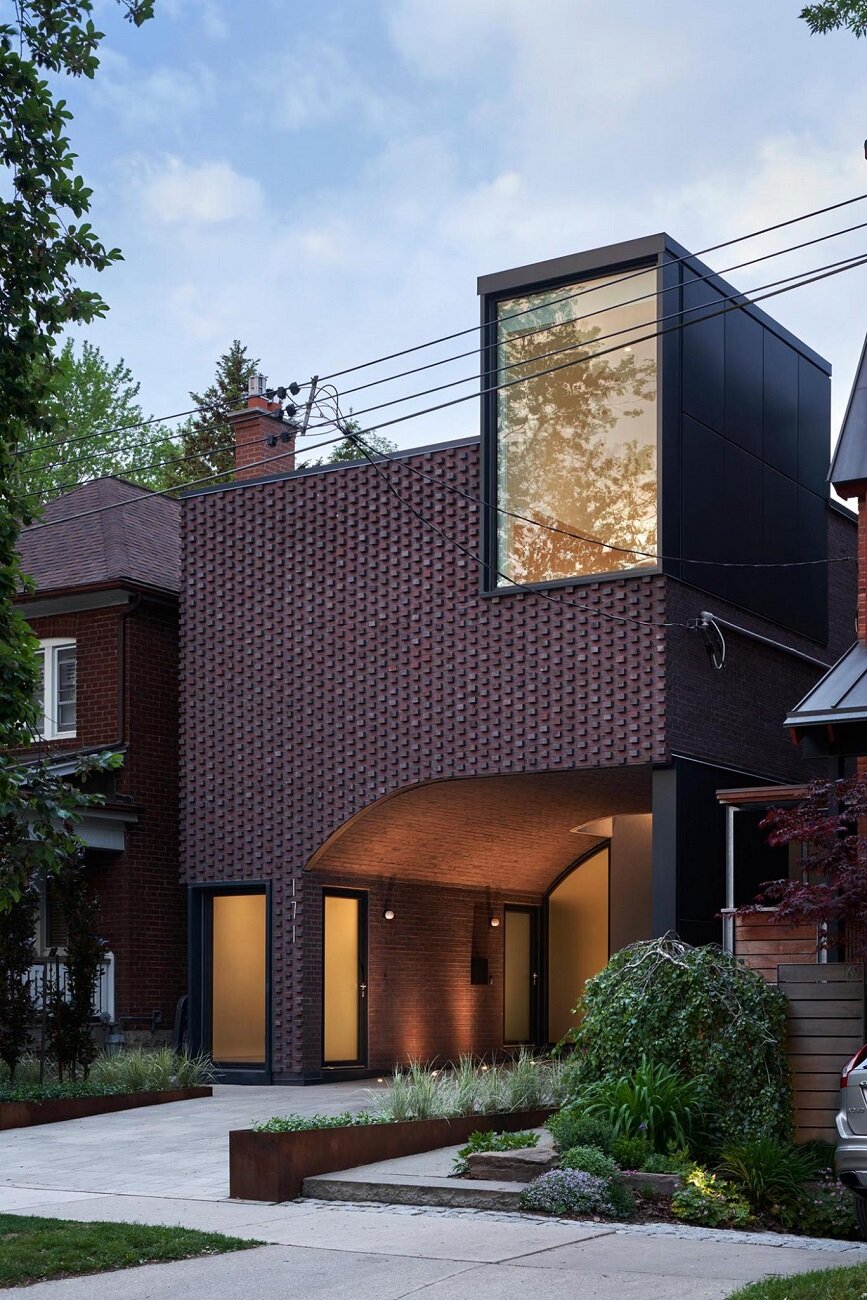#17851. Modern facade with contrasting textured brickwork and black module

This modern residence is a brilliant example of architectural contrast and innovative facade design, where traditional brickwork meets ultra-contemporary elements. The building's facade is organized into two distinct volumes: the main level with textured brickwork arranged in a volumetric pattern creating a weaving effect, and an upper black rectangular module featuring a large panoramic window.
Particularly notable is the brickwork treatment on the facade: instead of traditional flat laying, the architect employed a technique of projecting elements, creating a rhythmic geometric pattern that changes its appearance depending on the angle of lighting and time of day. This textural play gives the traditional material a contemporary voice.
The entrance area is designed as an elegant arch that softens the overall geometry and creates a welcoming gesture for guests. Large glass doors with minimalist frames provide a connection between interior and exterior spaces, filling the entrance hall with natural light.
The upper volume of the facade is executed in contrasting black with a large window reflecting the surrounding greenery. This technique not only creates visual tension in the composition but also makes the upper floor appear lighter, as if floating above the brick foundation.
This approach to facade design can be adapted for smaller private homes: playing with material textures, bold combinations of traditional and modern elements, and the use of contrasting volumes—all these techniques help create an architecturally expressive building that stands out against typical development.